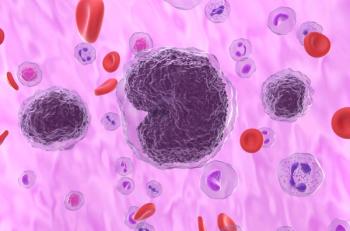
Immuno-Oncology Agents Are Not Above Resistance, Study Shows
A new study, published in Nature Communications, has delineated a mechanism that could help explain the resistance that is emerging with the new immuno-oncology agents such as PD-1 and PD-L1.
A new study, published in Nature Communications, has delineated a mechanism that could help explain the resistance that is emerging with the new immuno-oncology agents such as the inhibitors of programmed death 1 (PD-1) and programmed death ligand 1 (PD-L1). Using immunocompetent mouse models for lung cancer, the authors identified an adaptive immune response—in the form of activated alternative checkpoints—in the tumor microenvironment following anti—PD-1 therapy.
“We now have immunotherapies that are effective for quite a number of tumor types. That’s really changed the way we manage patients with lung cancer and other cancers,” said Peter Hammerman, MD, PhD, of the Broad Institute, and senior author on the study, in an interview with STAT. “But we don’t really have a great understanding of what might predict resistance or sensitivity to these agents. If you are a patient lucky enough to respond, what’s really limiting your response? The majority of patients are going to become resistant to these therapies. This provides some insight and some mechanistic understanding of why that happens.”
The authors treated KRAS and EGFR lung cancer mouse models with an anti—PD-1 antibody till the tumors showed progress, as monitored by magnetic resonance imaging (MRI). Evaluation of the animal immune profiles identified upregulation of T-cell immunoglobulin mucin-3 (TIM-3) in T-cells that were bound to the PD-1 antibody. This survival advantage of the TIM-3–expressing cells was reversed by treating the mice with an anti–TIM-3 antibody. The authors write that mice were treated with a PD-1 blocking antibody until tumors progressed, and then treatment with a TIM-3-blocking antibody was initiated when mice appeared both clinically unwell and demonstrated progressive disease by MRI imaging. Blocking TIM-3 resulted in significant clinical improvement and a survival advantage in the animals—while anti–PD-1 treatment resulted in median survival of 5 weeks, animals who were subsequently treated with the TIM-3 antibody had a median survival of 11.9 weeks (P = .0008). Importantly, the authors identified upregulation of LAG-3 and CTLA-4 expression—although the induction was lower than TIM-3—which raises the possibility of multiple feedback resistance mechanisms and the need for combination therapy approaches.
Hammerman explained, “The T cells infiltrating the tumor are restrained by PD-L1/PD-1, so by targeting those [with drugs] we’re allowing the T cells to attack this tumor when they’d normally be restrained. But over time, we see that the T cells will adapt to use alternate immune checkpoints than PD-L1/PD-1, which can then blunt immune response to tumors again. The T cells in these mice become exhausted again and that’s associated with upregulation of other immune checkpoints, including one called TIM-3.”
To confirm the observation in a more realistic setting, the authors analyzed pleural effusion samples from patients with lung cancer who had been treated with anti—PD-1 antibodies and those who had not had their immune system modulated with these agents. The patients treated with the immune modulating anti–PD-1 antibody demonstrated an increased expression of TIM-3 and CTLA-4 on their T-cells, as compared with the control samples.
The authors conclude that their data suggests that cancers possess the ability to evolve in the face of immunotherapy and to escape therapy by engaging bypass pathways. Understanding the dynamics and diversity of these mechanisms will identify therapeutic strategies that can prolong the efficacy of immunotherapy and thereby improve patient outcomes, they write.
Reference
Koyama S, Akbay EA, Li YY, et al. Adaptive resistance to therapeutic PD-1 blockade is associated with upregulation of alternative immune checkpoints [published online February 17, 2016]. Nat Comm. doi:10.1038/ncomms10501.
Newsletter
Stay ahead of policy, cost, and value—subscribe to AJMC for expert insights at the intersection of clinical care and health economics.













































